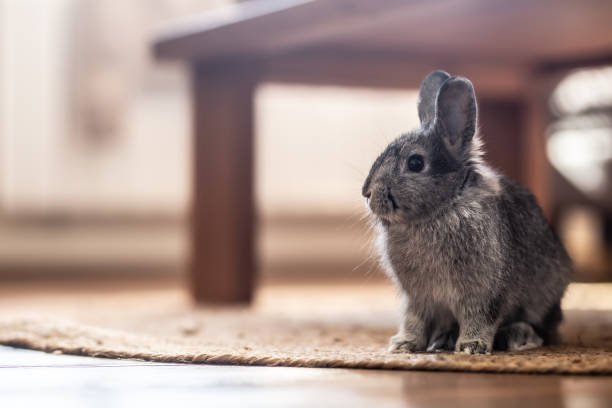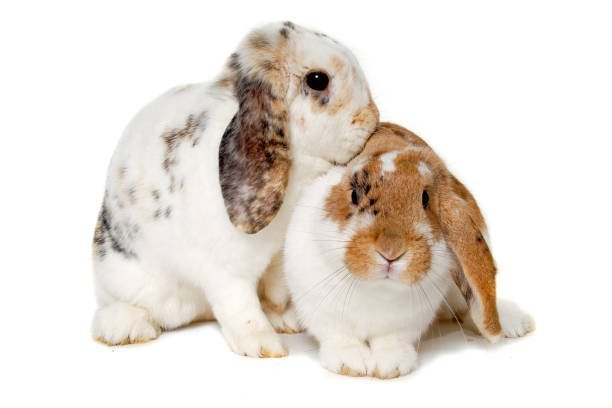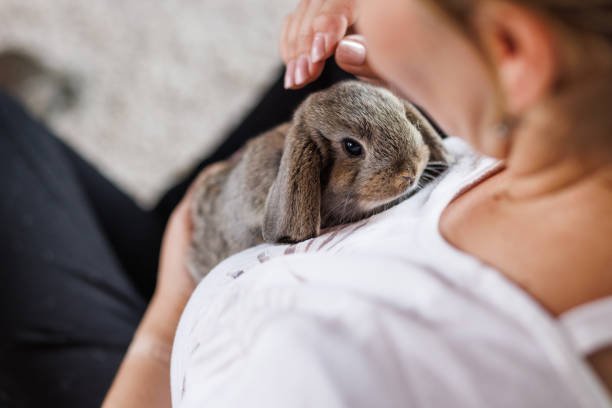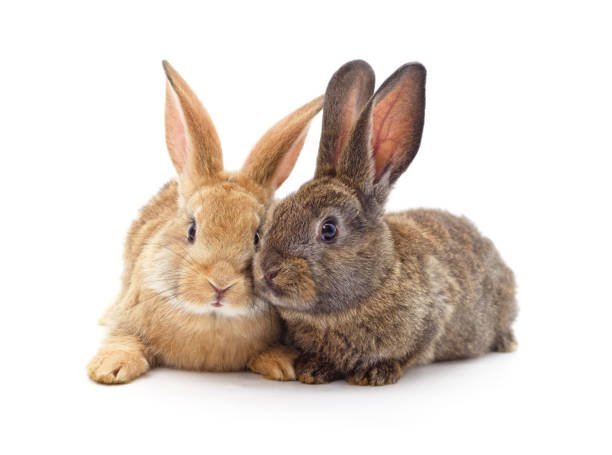What should I feed a rescued rabbit for optimal health?

Introduction:
In this article, I’ll delve into the essential considerations for providing optimal nutrition to a rescued rabbit to ensure their overall health and well-being. Caring for a rescued rabbit can be a rewarding experience, but it comes with a set of responsibilities, and one of the most crucial aspects is their dietary needs. Unlike many other pets, rabbits have unique dietary requirements that demand careful attention to maintain their health and vitality.
Rabbits are herbivores with a sensitive digestive system, and their nutritional needs can significantly impact their longevity and quality of life. It’s vital to understand the basics of a proper rabbit diet, including the types of hay, fresh vegetables, and commercial rabbit pellets that should be incorporated into their daily meals. By providing your rescued rabbit with a well-balanced and nutritious diet, you can help them thrive and enjoy a happy, healthy life.
High-quality hay as the main diet:
High-quality hay is the cornerstone of a healthy rabbit’s diet. Rabbits are herbivores with a unique digestive system that relies on a steady intake of fiber to function properly. Hay provides this essential fiber while also promoting dental health by encouraging natural chewing. Two main types of hay are commonly recommended: timothy hay and orchard grass hay. These hays are rich in fiber, low in calories, and provide the necessary roughage for a rabbit’s digestive tract.
Incorporating hay as the primary food source helps prevent obesity and keeps a rabbit’s teeth naturally worn down, reducing the risk of dental problems. It’s important to ensure that the hay is fresh, free from mold or dust, and always accessible to your rabbit. Offer an unlimited supply of hay to support their health and ensure proper digestion. The act of eating hay also keeps rabbits mentally stimulated and prevents boredom, a common issue in captivity.
Moreover, hay is essential for preventing gastrointestinal stasis, a potentially life-threatening condition in rabbits where the digestive system slows down or stops. A high-fiber diet from hay helps maintain the gut’s motility and prevent blockages. To sum up, high-quality hay is the primary source of nutrition for rabbits and should be available at all times to promote their optimal health.
Fresh and clean water daily:
In addition to a diet rich in hay, fresh and clean water is a vital component of a rescued rabbit’s daily nutrition. Water plays a crucial role in various bodily functions, including digestion, circulation, and temperature regulation. Ensuring that your rabbit has access to a continuous supply of fresh water is essential for their overall health.
Rabbits can be prone to dehydration, which can lead to various health issues. They lose water through respiration, urine, and feces, making it necessary to replenish their fluids regularly. Providing a clean water source helps prevent urinary tract problems and maintains proper kidney function. It’s crucial to use a sturdy water bottle or dish that is difficult for the rabbit to knock over or soil. Regularly check and clean the water container to prevent contamination.
The amount of water a rabbit needs can vary based on factors such as their size, age, and diet. Typically, a rabbit should consume about 50-150 milliliters of water per kilogram of body weight daily. Monitoring their water intake is essential to ensure they are adequately hydrated, especially in hot weather or if they consume a diet high in dry hay. Remember that insufficient water intake can lead to serious health concerns, so making fresh and clean water available daily is non-negotiable.
Limited pellets with proper nutrition:
While hay forms the foundation of a rabbit’s diet, commercial rabbit pellets can provide additional nutrients. However, it’s crucial to use them in moderation and choose high-quality pellets that meet the nutritional needs of your rabbit. Pellets are concentrated sources of nutrition and should complement, not replace, the primary hay diet.
When selecting pellets, opt for those specifically formulated for rabbits and avoid mixes with seeds, nuts, or colorful bits, as these can be high in fats and sugars. Look for pellets that have a high fiber content (18-20%) and a lower percentage of protein (around 14-16%), as these ratios are more appropriate for adult rabbits. Young, growing rabbits and pregnant or lactating does may require higher protein content, so consult your veterinarian for specific recommendations in these cases.
Portion control is key when offering pellets. Limit the daily pellet intake to about 1/8 to 1/4 cup per 5 pounds of body weight for adult rabbits. This ensures that the rabbit primarily consumes hay and fresh vegetables, which better mimic their natural diet. Overfeeding pellets can lead to obesity and related health issues, such as pododermatitis (sore hocks) and fatty liver disease. Always measure the appropriate pellet amount to maintain a balanced diet and support your rescued rabbit’s overall health.
Fresh vegetables as dietary supplements:
Incorporating fresh vegetables into your rescued rabbit’s diet is an excellent way to provide essential vitamins and minerals, increase dietary variety, and promote overall well-being. While hay should make up the majority of their diet, vegetables serve as valuable supplements to enrich their nutritional intake.
Choose a variety of leafy greens and non-leafy vegetables to offer your rabbit. Leafy greens such as romaine lettuce, kale, and parsley are excellent sources of fiber, vitamins, and hydration. Non-leafy vegetables like bell peppers, carrots, and broccoli offer diversity and different nutrients. Remember to introduce new vegetables gradually to avoid digestive upsets, and monitor your rabbit’s response to each type. Rabbits have individual preferences, and some may be more sensitive to certain vegetables than others.
It’s essential to wash all vegetables thoroughly and serve them fresh, ensuring that they are free from pesticides or contaminants. Introduce one new type of vegetable at a time and monitor your rabbit’s stool and behavior to ensure they tolerate it well. Not all rabbits have the same tolerance for every vegetable, so you may need to tailor their diet to suit their individual needs.
Additionally, always feed vegetables in moderation. Generally, a few cups of fresh vegetables per day for a 5-pound rabbit is a suitable guideline, but adjust this amount based on your rabbit’s size and dietary requirements. Fresh vegetables offer variety and nutrition to support your rescued rabbit’s optimal health and well-being.
Avoid sugary, starchy, or fatty foods:
A key aspect of providing optimal nutrition for a rescued rabbit is understanding what to avoid in their diet. Rabbits have a delicate digestive system and can be sensitive to certain foods. In particular, it’s crucial to steer clear of sugary, starchy, and fatty items that can disrupt their digestive balance and lead to various health issues.
One common dietary pitfall is offering sugary treats or fruits in excess. While rabbits may enjoy the taste of fruits like apples or bananas, these foods are high in natural sugars that can upset their digestive tract and lead to diarrhea or obesity. Small, occasional fruit treats are acceptable but should be offered sparingly.
Starchy foods, such as bread and cereals, are also problematic for rabbits. They lack the necessary fiber and can cause digestive problems. Avoid feeding your rabbit such items and focus on their core diet of hay and vegetables.
Similarly, fatty foods should be avoided. High-fat foods can lead to obesity and liver problems in rabbits. These foods include nuts, seeds, and oily snacks. Offering such foods as occasional treats or rewards is not recommended for maintaining optimal rabbit health.
Occasional treats in moderation:
While it’s important to be cautious about treats, occasional ones can be a source of joy and positive interaction with your rescued rabbit. Treats can be used for training, bonding, or simply to offer variety in their diet. However, moderation is the key to keeping your rabbit healthy and maintaining an appropriate balance in their nutrition.
Choose healthy and safe treat options. Commercial rabbit treats, fresh herbs, or small pieces of fruits like a slice of banana can be suitable choices. These treats should be small in size and provided sparingly, such as once or twice a week. Be mindful of the treat’s calorie content and their impact on your rabbit’s overall daily intake.
It’s essential to monitor your rabbit’s response to treats. While some rabbits tolerate treats well, others may have sensitivities or allergies. Watch for any signs of digestive upset, such as soft stools, and adjust the type or frequency of treats accordingly. Additionally, always introduce new treats gradually to ensure your rabbit’s system can handle them.
Remember that treats should complement, not replace, your rabbit’s core diet of hay, fresh vegetables, and a limited amount of pellets. By offering treats in moderation, you can enrich your rabbit’s life and maintain their health while avoiding excessive calorie intake.
Monitor portion sizes for balance:
Maintaining the proper balance in your rescued rabbit’s diet requires careful portion control. Whether it’s hay, vegetables, or pellets, being mindful of portion sizes helps prevent obesity and ensures that your rabbit receives the nutrition they need without overindulging.
For hay, rabbits should have access to it at all times. However, it’s important to monitor their hay consumption to ensure they are eating enough but not excessively. The amount of hay a rabbit needs can vary based on their size and activity level, but a rough guideline is that they should consume a pile of hay roughly the same size as their body every day.
When it comes to vegetables, a few cups per day for a 5-pound rabbit is a general recommendation. However, you should adjust this amount based on your rabbit’s size and individual dietary requirements. Monitoring your rabbit’s weight and overall health can help you determine whether you need to adjust portion sizes up or down.
For pellets, it’s crucial to follow the manufacturer’s recommendations for daily serving size and avoid overfeeding. Typically, adult rabbits require about 1/8 to 1/4 cup of high-fiber pellets per 5 pounds of body weight daily. Keep in mind that young rabbits, pregnant or lactating does, and rabbits with specific health concerns may require different portions, so consult your veterinarian for guidance.
Regular vet check-ups for adjustments:
Finally, the importance of regular veterinary check-ups cannot be overstated when caring for a rescued rabbit. While providing the right diet and nutrition at home is crucial, professional guidance and healthcare are essential for your rabbit’s long-term health.
A veterinarian who specializes in exotic pets, particularly rabbits, can assess your rabbit’s overall health and offer recommendations on their specific dietary needs. These check-ups may include discussions about your rabbit’s weight, diet, and any health concerns. Your vet can help you fine-tune their diet to address their individual requirements, which can vary based on age, breed, and any existing health issues.
Additionally, regular veterinary visits are an opportunity to discuss any changes or concerns related to your rabbit’s diet. If your rabbit develops allergies, sensitivities, or specific health conditions that impact their nutrition, your vet can provide guidance on necessary adjustments. They can also address issues like dental problems, which can affect a rabbit’s ability to eat hay or other foods.
Overall, partnering with a veterinarian experienced in rabbit care ensures that you’re providing the best possible diet for your rescued rabbit. It allows for tailored dietary recommendations and early intervention for any health concerns, ultimately contributing to your rabbit’s optimal health and well-being.
Conclusion:
I hope this comprehensive guide has shed light on the crucial aspects of feeding a rescued rabbit for optimal health. Providing the right nutrition is not only a fundamental responsibility but also an act of love and care for these gentle and endearing creatures.
In summary, the foundation of a rescued rabbit’s diet lies in high-quality hay, fresh water, and controlled portions of nutritious pellets. Fresh vegetables offer a diversity of nutrients, while the avoidance of sugary, starchy, and fatty foods is paramount to their well-being. Occasional treats, in moderation, can be used for bonding and enrichment.
As you embark on this rewarding journey of rabbit care, always remember that each rabbit is unique. They may have individual preferences and requirements. Regular veterinary check-ups are invaluable for personalized guidance and early intervention.










Post Comment